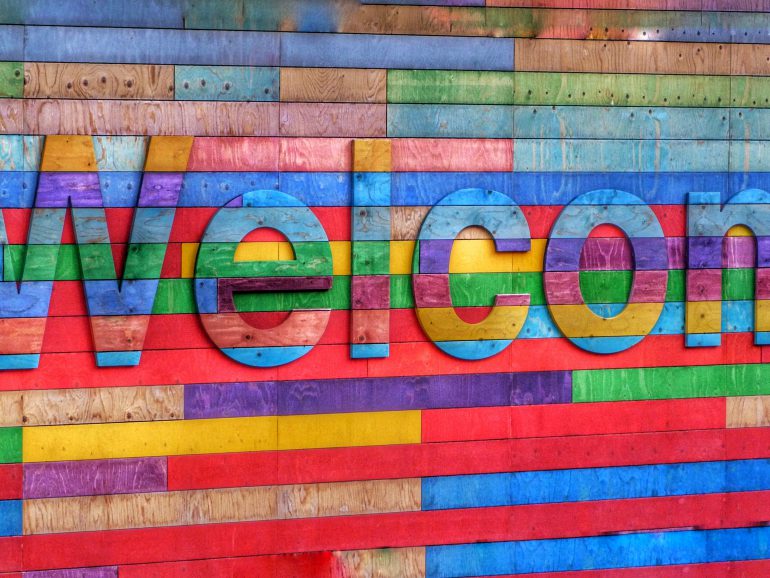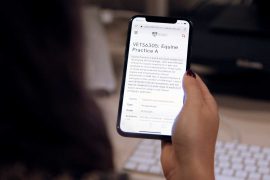I started my tertiary education journey here at the University of Sydney. While I was fortunate enough to have somewhat of a soft landing by virtue of arriving with many of my high school peers, I still vividly remember the first time one of my lecturers pronounced my less-than-phonetic last name correctly. Professor Meg Miller, when meeting with her to ask for a reference to go on exchange, welcomed me to her office as “Alix Thoeming… the H is silent, right?”. I’ve since spent another eight years at Sydney, finishing both undergraduate and postgraduate studies, but that brief interaction back in 2011 remains one of the most powerful feelings of belonging I have felt at university.
This sense of belonging, of connectedness, is closely associated with our students’ satisfaction with their educational experience. Interaction with peers, teaching quality, and a positive transition experience are major aspects of building this sense of “fitting in”. The transition experience is a major focus of our Student Experience Strategy. As part of the first stages of the resulting project, targeted transition activities are being integrated into a number of large first-year units across the University in semester 1, 2020. Another powerful way to welcome your students to their first (or second, or third, or fourth…) year at Sydney, personally and with personality, is through the capabilities of the Student Relationship Engagement System (SRES).
Say hello!
Think about how nice it would be to receive a welcoming message from the coordinator of a unit you’ve enrolled in. They say hello and introduce themselves, send through information about what you can do to prepare for your first week of classes, and remind you to check out the unit Canvas site over the next couple of days. You, the coordinator, can do all of that through an announcement or a message on Canvas. SRES can do even more! Addressing students directly by their preferred name is the least of it. Here are just a few pieces of inspiration for how you can use the information either readily available through or easily drawn into your unit’s SRES list to welcome them to your unit:
- Encourage students who haven’t yet logged onto Canvas, or those who have spent only a small amount of time on the site, to jump on and check out all of the great information you’ve posted there. One thing to note here – Canvas doesn’t report visits through the Student app, so it’s always a good idea to design your messages to be nudging but not prescriptive or judgemental.
- Remind students of their tutorial times and rooms, and introduce them to their tutors ahead of time by writing a quick profile of your tutor(s) to send out. Even better, show your tutors how to use SRES to write and send their own introductions!
- Sync the Academic Honesty Education Module (AHEM) to your site, and remind those who haven’t yet completed it to do so in the first couple of weeks.
- Make sure useful information gets to all students, including those who enrol late. SRES keeps note of who you’ve sent each message to, and with students able to enrol even after week 1 you can keep track of those who may have missed their first few classes and ensure they’re up to date.
- In addition to sending personalised emails, Guien Miao suggests sending students a ‘getting to know you’ survey, and setting up personalised feedback and support portals embedded within Canvas, all powered by SRES.
- Do you want students to check their enrolment choices? Does your unit offer different levels, such as fundamentals or advanced? If so, offer students advice or ask them to contact you with questions. It’s often quicker to deal with issues before teaching starts in earnest.
- Students won’t necessarily know how to prepare for week 1 – let them know that they should download lecture notes or where the reading list is.
- Sign off in a friendly way – most of us prefer students to address us by our first names!
SRES can also be used throughout your semester. As tutorials start, assessments begin , and feedback is written, there will be a lot more information you can draw on to support your students. Last year when I took the Graduate Certificate in Educational Studies (Higher Education) my unit coordinators emailed our assessment feedback directly to our inboxes. After feedback goes out SRES can help you follow up, offering congratulations to high-performing students and targeted resources to those in need of more support. And of course Teaching@Sydney has a wealth of articles written by colleagues which will inspire you further.
If you’re unsure about how to make any of these things happen with SRES come along to a workshop, run by Educational Innovation. They are offered regularly for both new and advanced users. There’s also a Yammer group for discussions about existing, new and requested features. Customised workshops can also be organised for your faculty, school, or department – get in touch with us for more information.






6 Comments